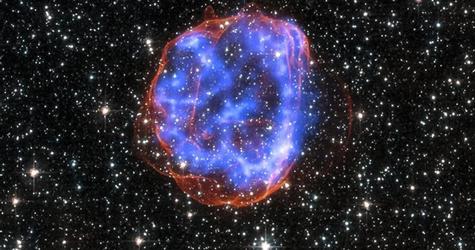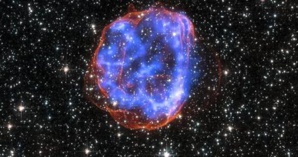The questions that how much “quantity of the element” does the stars contain, has finally received some light by the astronomers’ recent discovery. In astrophysics, the said question has long remained under the shroud of mystery. However, following a stellar type explosion of a nova, scientists were able to discover the presence of lithium.
The nova, named Nova Centauri, had exploded in the year 2013. After two long years, while observation, scientists from Chile, using the “two telescopes” of their observatory, “detected tiny amounts of the chemical element lithium” in it. Moreover, the European Southern Observatory, sometimes in the course of this week, has proclaimed the Nova Centauri to be “brightest nova so far this century”.
Reuters inform that the said discovery “could be the first step” which could eventually lead to the solution of the “so-called lithium riddle”. The scientists take help of a model of “Big Bang”, that kick-started the process of universes birth approximately about “13.8 billion years ago”, to arrive at a quite accurate calculation of “how much lithium should be present” in the nova. According to the model of Big Bang, the older stars contain less lithium as compared to the younger ones.
Furthermore, talking about the difference in the presence of lithium that is determined by the age of the stars, Reuters reports:
“Astronomers have long speculated that the latter part of the problem could be explained by novae expelling the element, ‘seeding’ space with lithium and enriching the interstellar medium from which new stars are born.”
Nevertheless, till date, there is a lack of evidence regarding the quantity of lithium presence in novae has been found. ESO also informs that the Nova Centauri continues to expel lithium into the space in a speed of two kilometres per hour, by travelling “1.24 million miles”.
The phenomenon observed could give a clue as to why there is an “unexpectedly large amount of lithium in our galaxy”. Scientists believe that the “billions of other novae” much must “extrapolated” the element lithium into the space during their explosion in the history of Milky Way. Massimo Della Valle who is a co-author of the study that has been published in the “Astrophysical Journal Letters”, explains:
"If we imagine the history of the chemical evolution of the Milky Way as a big jigsaw, then lithium from novae was one of the most important and puzzling missing pieces".
Nevertheless, there is a “mismatch” between the abundance estimated amounts of lithium generated during the Big Bang and the actual amount observed in older stars. This discrepancy still puzzles the scientists, for whom the issue “still remains an open problem”.
References:
http://www.reuters.com/article/2015/07/29/us-science-nova-chile-idUSKCN0Q314920150729
The nova, named Nova Centauri, had exploded in the year 2013. After two long years, while observation, scientists from Chile, using the “two telescopes” of their observatory, “detected tiny amounts of the chemical element lithium” in it. Moreover, the European Southern Observatory, sometimes in the course of this week, has proclaimed the Nova Centauri to be “brightest nova so far this century”.
Reuters inform that the said discovery “could be the first step” which could eventually lead to the solution of the “so-called lithium riddle”. The scientists take help of a model of “Big Bang”, that kick-started the process of universes birth approximately about “13.8 billion years ago”, to arrive at a quite accurate calculation of “how much lithium should be present” in the nova. According to the model of Big Bang, the older stars contain less lithium as compared to the younger ones.
Furthermore, talking about the difference in the presence of lithium that is determined by the age of the stars, Reuters reports:
“Astronomers have long speculated that the latter part of the problem could be explained by novae expelling the element, ‘seeding’ space with lithium and enriching the interstellar medium from which new stars are born.”
Nevertheless, till date, there is a lack of evidence regarding the quantity of lithium presence in novae has been found. ESO also informs that the Nova Centauri continues to expel lithium into the space in a speed of two kilometres per hour, by travelling “1.24 million miles”.
The phenomenon observed could give a clue as to why there is an “unexpectedly large amount of lithium in our galaxy”. Scientists believe that the “billions of other novae” much must “extrapolated” the element lithium into the space during their explosion in the history of Milky Way. Massimo Della Valle who is a co-author of the study that has been published in the “Astrophysical Journal Letters”, explains:
"If we imagine the history of the chemical evolution of the Milky Way as a big jigsaw, then lithium from novae was one of the most important and puzzling missing pieces".
Nevertheless, there is a “mismatch” between the abundance estimated amounts of lithium generated during the Big Bang and the actual amount observed in older stars. This discrepancy still puzzles the scientists, for whom the issue “still remains an open problem”.
References:
http://www.reuters.com/article/2015/07/29/us-science-nova-chile-idUSKCN0Q314920150729






